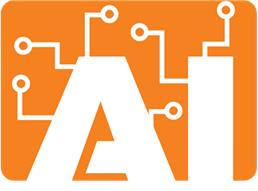Employee attrition/churn is the phenomenon of people leaving an organization due to various reasons. These reasons include resignation due to reasons like lack of job satisfaction, unsatisfactory job environment, undue overtime, poor pay scale, dissatisfaction toward job profile, and sabbaticals.
Controlling employee churn is among the focal points of an organization’s human resource (HR) management department. Needless to say, high employee attrition rate is a disadvantage to any organization in today’s highly competitive environment, where finding the right talent is both expensive and tough.
Employee Attrition Prediction
The practice of predicting if an employee will stay with or leave the organization is known as employee attrition prediction.
To predict employee attrition, trends are drawn from the analysis of humongous sets of data and then these trends are studied to single out major factors that affect an employee’s decision to quit the organization. If such factors are found to be prevalent among employees, an organization can bring ineffective policies to counter possible attrition. For example, an Indian IT giant, Accenture decided to do away with their yearly performance review process to counter high employee attrition rates.
Why Employee Attrition Prediction
When an employee quits, an organization stands to lose not only a valuable skill-set but the team structure, rhythm, and overall productivity gets negatively affected.
Plus, finding a suitable replacement could be a time-consuming process, resulting in other employees to be burdened with extra work and responsibilities for which they may not possess the requisite skill-set.
According to an estimate by the Center for American Progress, replacement costs for a highly-skilled employee might be well over 200% of their salary. More the attrition, the higher will be the cost incurred. Thus, companies are leaning on predictive analytics using machine learning to curb employee churn.

How Machine Learning (ML) can help in Employee Attrition Prediction
An ML algorithm for predictive analysis is first trained on analytical data to help it identify attrition trends and the factors affecting these trends. These factors are weighted within the system to demarcate the most important reasons why employees quit and the signature behaviors they exhibit in their decision-making process.
Then, the ML system is fed real-time data to identify employees inclined toward attrition using the behaviors and factors identified in the training set.
The insights generated from an intelligent system based on predictive ML algorithms are invaluable in recognizing factors that push employees to leave or those who are inclined to leave. Further, prescriptive analysis of these insights provides us insights at the individual level, for all employees. Such data enables the HR department to take proactive measures to limit attrition by designing policies directed toward improving the work environment.
In Conclusion…
ML-based predictive and prescriptive analysis help the organization in recognizing major issues both at the organization level and individual level, not easily spotted, that push the employee to quit, and design the best course of action. The end goal of an organization is to maximize productivity and minimize overheads, which can be achieved using the results from an intelligent attrition prediction system.
If you think your business has high attrition that can be managed with predictive analysis, reach out to us today!
We’re here to make AI work for you.
Talk to our team today and start your AI journey. Whether you have questions about our services, need support, or want to discuss a potential project, our team is ready to help.
Social network
sales@netsmartz.com





